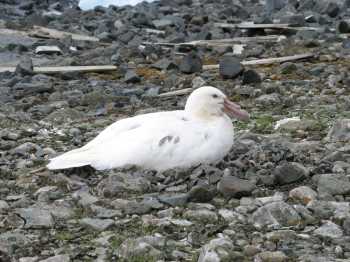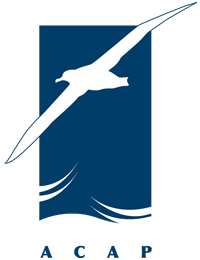Diego González-Zevallos (Centro Nacional Patagónico (Consejo Nacional de Investigaciones Científicas y Técnicas), Puerto Madryn, Argentina) and colleagues have published this year in the open-access journal Polar Research on changes in seabird populations on part of the Antarctic Peninsula, including of Southern Giant Petrels Macronectes giganteus.
The paper’s abstract follows:
“Seabird abundances and breeding distribution have the potential to serve as ecological indicators. The western Antarctic Peninsula is one of the three sites in the world with the greatest increases in local temperature during the last 50 years. The aim of this study was to monitor the distribution and abundance of breeding populations of seabirds in the northern sector of the Danco Coast, north-west of the Antarctic Peninsula, during the breeding season 2010/11. The birds were the Wilson's storm petrel (Oceanites oceanicus), South Polar skua (Stercorarius maccormicki), kelp gull (Larus dominicanus), Antarctic tern (Sterna vittata), snowy sheathbill (Chionis alba), chinstrap penguin (Pygoscelis antarctica), southern giant petrel (Macronectes giganteus), gentoo penguin (Pygoscelis papua), Cape petrel (Daption capense) and Antarctic shag (Phalacrocorax bransfieldensis). Annual breeding population growth increased in pygoscelids, southern giant petrel and sheathbill, and for the remaining species, breeding population trends were stable. Given that seabird populations can provide valuable information on the conditions of their feeding and nesting environments, this study highlights the need to maintain basics monitoring studies.”

A white-phase Southern Giant Petrel breeding in the Antarctic Peninsula region
Photograph by Markus Ritz
Reference:
González-Zevallos, D., Mercedes Santos, M., Rombolá, E.F., Juáres, M.A. & Coria, N.R. 2013. Abundance and breeding distribution of seabirds in the northern part of the Danco Coast, Antarctic Peninsula. Polar Research 32.
http://www.polarresearch.net/index.php/polar/article/view/11133
John Cooper, ACAP Information Officer, 18 March 2013

 English
English  Français
Français  Español
Español